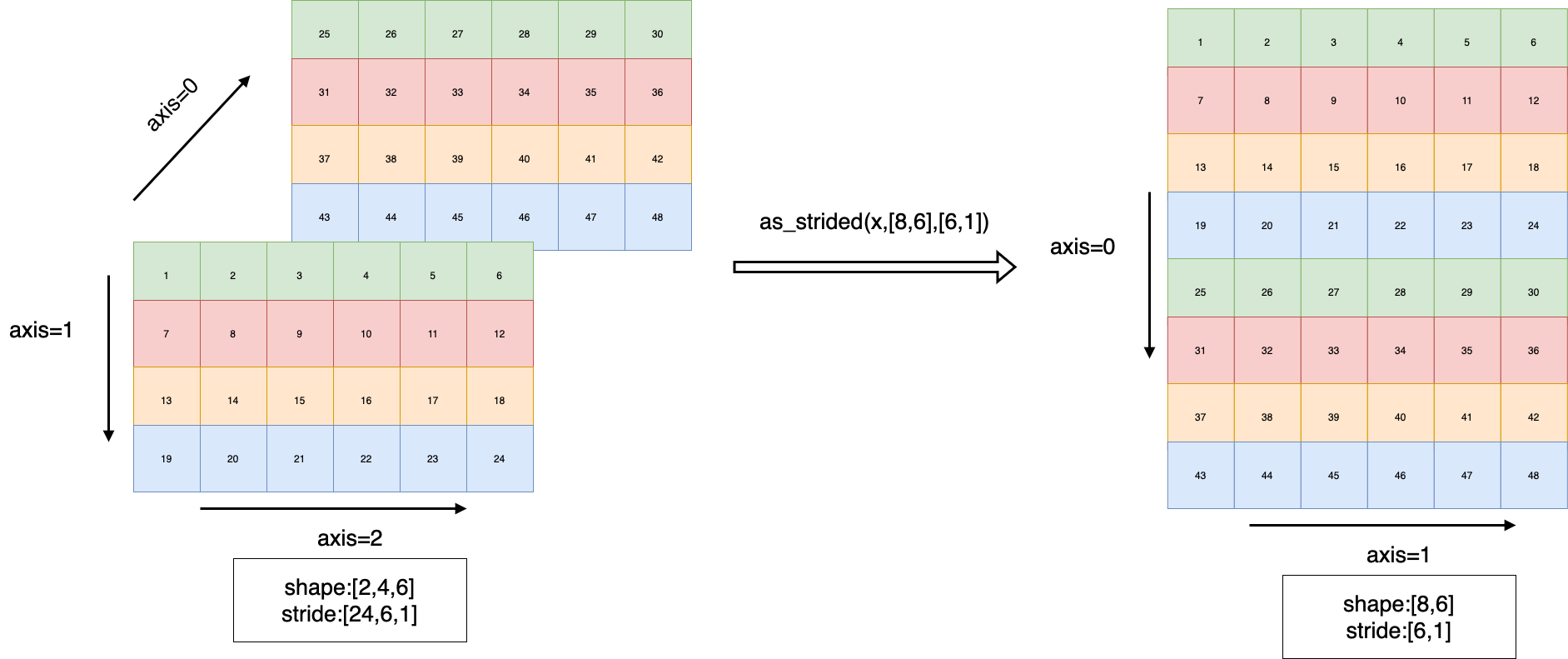as_strided
- paddle. as_strided ( x: Tensor, shape: Sequence[int], stride: Sequence[int], offset: int = 0, name: str | None = None ) Tensor [source]
-
View x with specified shape, stride and offset.
Note that the output Tensor will share data with origin Tensor and doesn’t have a Tensor copy in
dygraphmode.The following image illustrates an example: transforming an input Tensor with shape [2,4,6] into a Tensor with
shape [8,6]andstride [6,1].
- Parameters
-
x (Tensor) – An N-D Tensor. The data type is
float32,float64,int32,int64orboolshape (list|tuple) – Define the target shape. Each element of it should be integer.
stride (list|tuple) – Define the target stride. Each element of it should be integer.
offset (int, optional) – Define the target Tensor’s offset from x’s holder. Default: 0.
name (str|None, optional) – Name for the operation (optional, default is None). For more information, please refer to Name.
- Returns
-
Tensor, A as_strided Tensor with the same data type as
x.
Examples
>>> import paddle >>> paddle.base.set_flags({"FLAGS_use_stride_kernel": True}) >>> x = paddle.rand([2, 4, 6], dtype="float32") >>> out = paddle.as_strided(x, [8, 6], [6, 1]) >>> print(out.shape) [8, 6] >>> # the stride is [6, 1].

